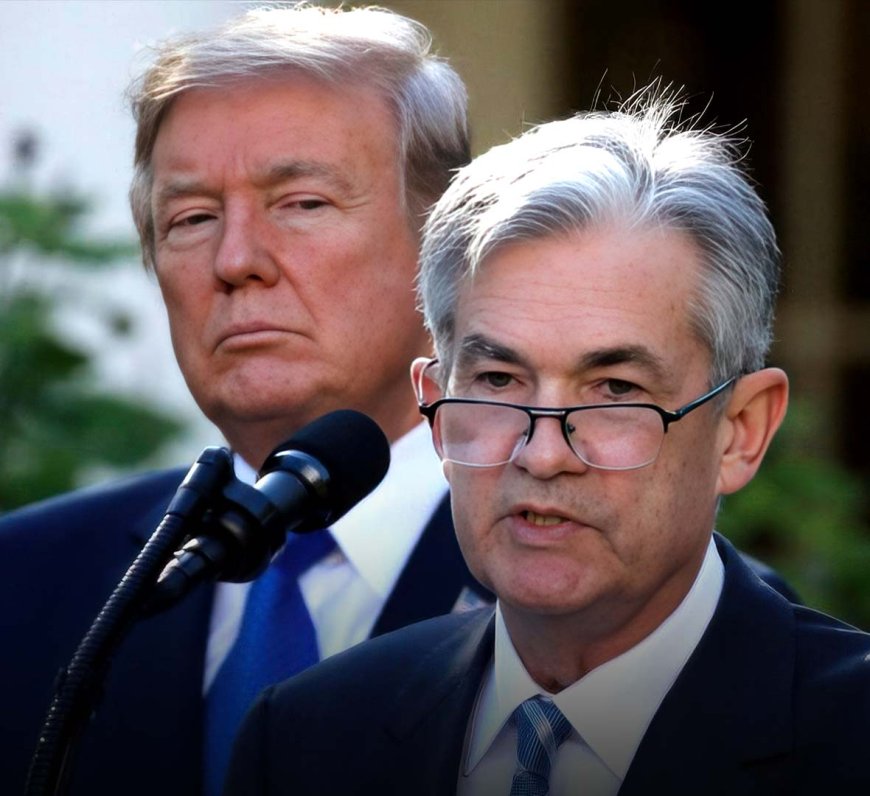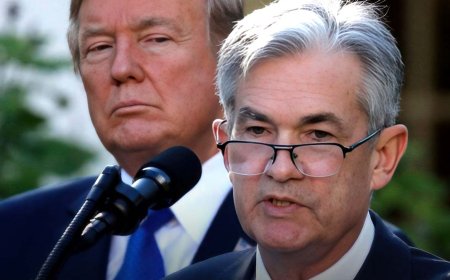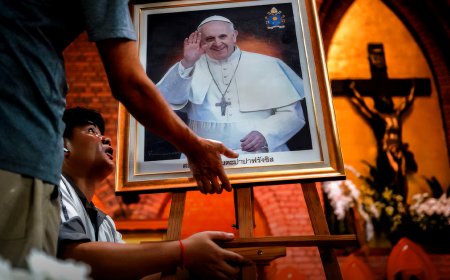Trump Says He Won’t Fire Fed Chair Powell — Markets Rally as Tensions Ease
After weeks of sharp criticism and a barrage of public pressure, President Donald Trump dialed back his threats against Federal Reserve Chair Jerome Powell, saying he has "no intention" of removing him from his post — a statement that immediately calmed jittery markets.

Washington, April 22 – After weeks of sharp criticism and a barrage of public pressure, President Donald Trump dialed back his threats against Federal Reserve Chair Jerome Powell, saying he has "no intention" of removing him from his post — a statement that immediately calmed jittery markets.
Speaking to reporters in the Oval Office, Trump made his stance clear: “I have no intention of firing him. I just want him to be more proactive in lowering interest rates.” This reversal came just a day after financial markets saw a sharp downturn, triggered by fears that Trump might interfere with the Fed’s independence — a move that could have dangerous implications for both investor confidence and the U.S. economy.
Following his comments, Wall Street responded positively. U.S. equity index futures surged by nearly 2% during Tuesday evening trading. The jump marked a quick rebound from Monday’s sharp declines in stocks, bonds, and the dollar.
Krishna Guha, Vice Chairman at Evercore ISI, described the development as a "clear positive" for markets. “Whether this was always the plan or a reaction to Monday’s chaos, it significantly reduces the chances of a financial nightmare,” he noted, citing the potential for scenarios like stagflation or a sovereign debt crisis — risks amplified by Powell's possible firing.
Trump’s assurance wasn’t limited to the Fed. He also hinted at progress on the trade front, saying a potential deal with China could lead to “substantially” lower tariffs, though he made it clear they would not be eliminated entirely. This fueled further investor optimism, adding fuel to the market's rebound.
However, Trump didn’t back down from his ongoing dissatisfaction with the Fed’s interest rate strategy. “We think it’s the perfect time to cut rates,” he said, calling on Powell to act sooner rather than later.
???? An Ongoing Power Struggle
Trump’s public feud with Powell dates back to his first presidential term, when he appointed Powell as Fed chair. Disappointed by Powell’s rate hikes in subsequent years, Trump has frequently criticized him — calling him a “loser” and even suggesting on social media that he should be fired "as fast as possible."
Legal experts argue that Trump’s power to remove the Fed chair is limited. The Federal Reserve Act of 1913 allows the president to appoint Fed governors, but they can only be removed “for cause,” a term usually interpreted to mean misconduct rather than policy disagreements.
Powell, for his part, has insisted that the Fed must remain politically independent. Still, Trump’s legal battles involving other independent agencies are being closely monitored, as they could set precedents that affect the Fed’s future.
???? What’s Next for Interest Rates?
The Fed, which has already lowered rates by a full percentage point late last year, is currently maintaining a range of 4.25% to 4.50%. However, it has opted to pause further rate changes during the past two policy meetings.
Fed officials are weighing inflation risks due to Trump’s tariff policies against the possibility of slowing growth. Surveys show consumer and business confidence dropping, even as official economic indicators like jobs and retail sales remain relatively strong.
Traders in the futures market are now betting on three rate cuts by the end of the year — down from four just days ago — reflecting a slightly more stable outlook in light of Trump’s recent comments.
Meanwhile, the International Monetary Fund (IMF) has downgraded its forecasts for both U.S. and global economic growth, citing trade tensions — particularly Trump's aggressive tariff strategies — as the key driver of global uncertainty.
As markets watch for the Fed’s next move in two weeks, one thing is clear: the balance between politics and policy remains as fragile as ever.
What's Your Reaction?











































































































